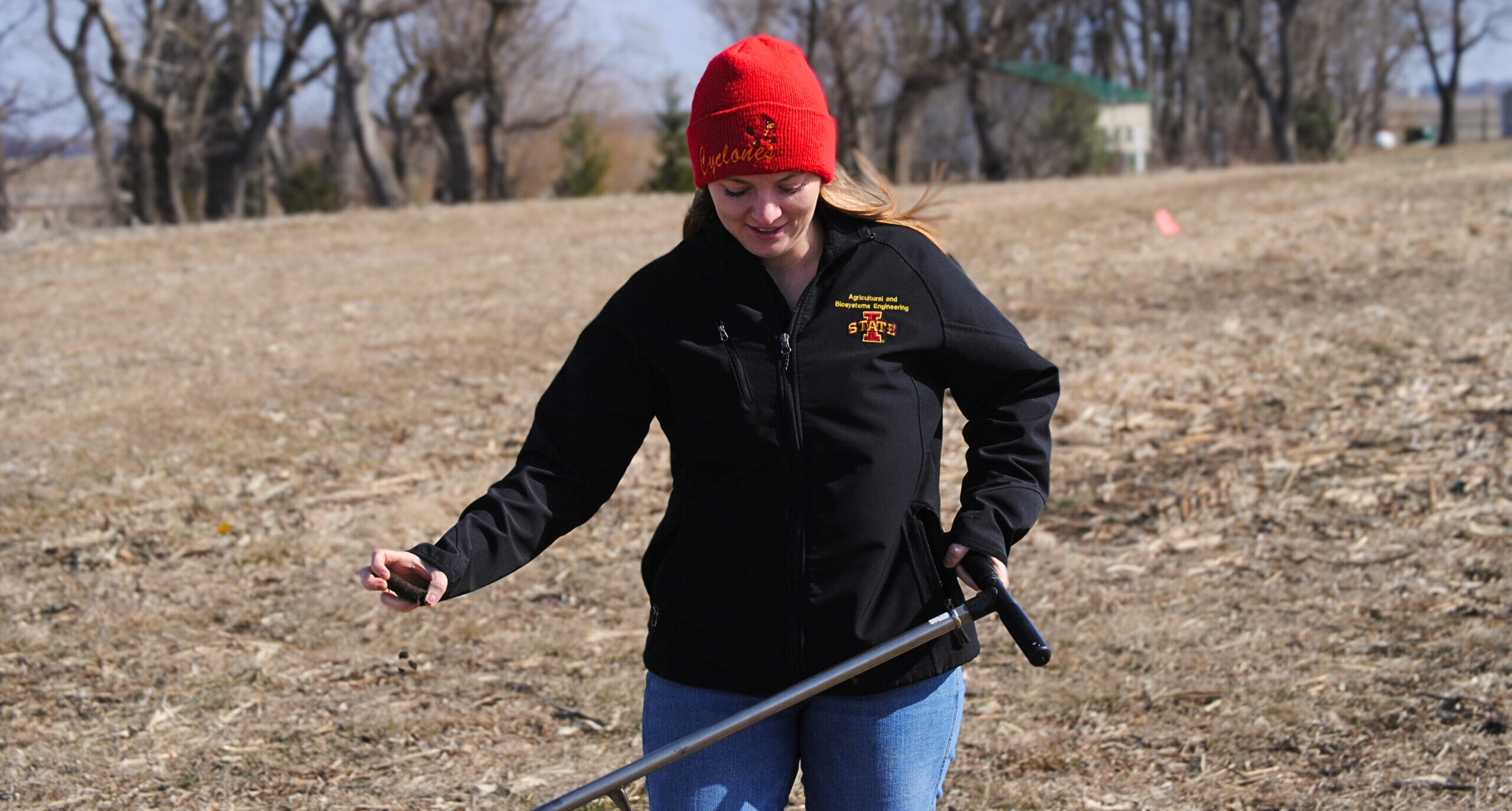Graduate program creates community and implementable pollution solutions
Author: Anna Keplinger
Author: Anna Keplinger

“Tile drainage, nitrate and phosphorus levels, all the soil stuff we manage here, it’s exciting!” said Gabrielle Myers-Bailey, a graduate student in agricultural and biosystems engineering “So much of our work as ag engineers leads to better water quality and lower soil impacts.”
“But, the RegenPGC perennial cover crops project I’m a part of feels special,” she said. “Because our approach can be easily integrated into current crop management systems, it has the real potential to be adopted wide-scale,” said Myers-Bailey.
RegenPGC
The “Regenerating America’s Working Landscapes to Enhance Natural Resources and Public Goods through Perennial Groundcover” project, known as RegenPGC, brings together academic and industry and expertise, with a shared mission: Finding a way to make perennial cover crops effective in preventing erosion and retaining water nutrients and quality, without a yield loss in the crop.
The concept of cover crops is not new, but the unlike some cover plants that must be harvested and removed before crop-planting season, perennial cover crops do not need harvesting and do not negatively affect the primary crop yield.
Myers-Bailey started collecting data at the very beginning of the RegenPGC project. She monitors the water quality effects of a perennial ground cover versus other cover crop systems. The RegenPGC team has worked with a handful of local farmers to prove their approach is viable. And the future holds big plans to extend the solution’s impact.
“If you want to impact the hypoxic zone that agriculture has created, we have to reach the big hitters—the large acres,” said Raj Raman, Morill Professor of Agricultural and Biosystems Engineering and RegenPGC project director.
A community beyond research
Myers-Bailey started at Iowa State as an open-option undergraduate and soon found that agricultural and biosystems engineering was the place for her. After experiencing the undergraduate research program, she chose to continue her education in the department, recently publishing two chapters of her dissertation. She’s gearing up to complete her PhD this spring.
“The ABE faculty have been very kind and supportive, taking the time to make sure that you are understanding. And that made me want to continue in the department. With the RegenPGC project, whenever I check in with the other primary investigators, they’re all very invested in all of us doing well, even if they’re not directly involved in our research— I have a lot of mentors,” said Myers-Bailey.
After graduation, she will continue making an impact on water quality with the United States Department of Agriculture. In part due to the support she received from the department community.
“In our graduate student program, we do a lot of skill sharing, whether it’s technology or tips and tricks to CV building and poster creation. Older graduate students share with younger graduate students. There is a community built to create success, not competition with each other,” stated Myers-Bailey.